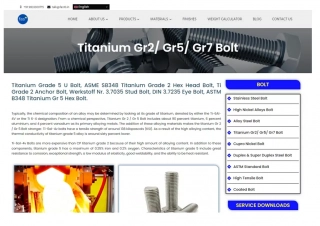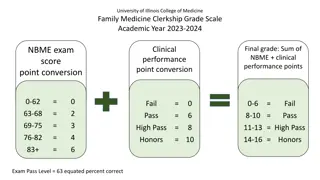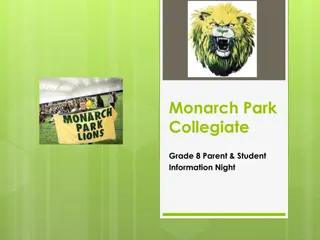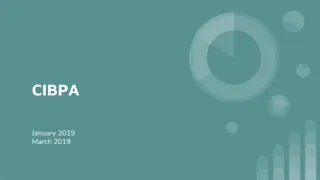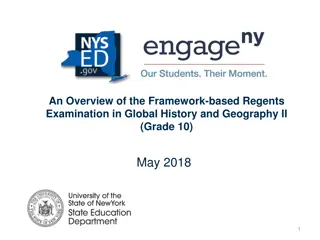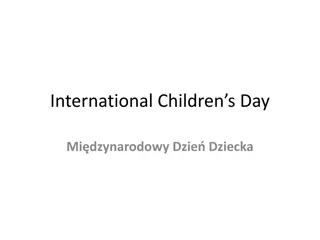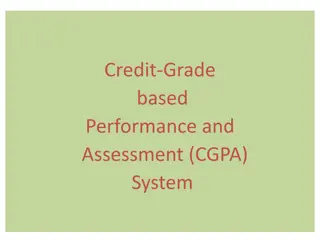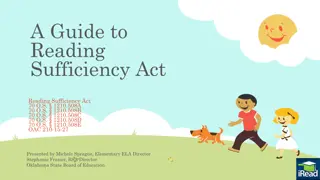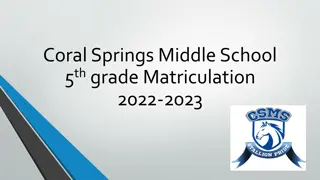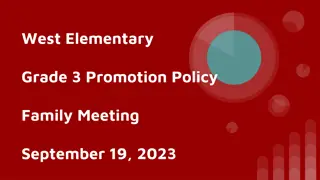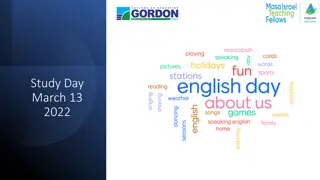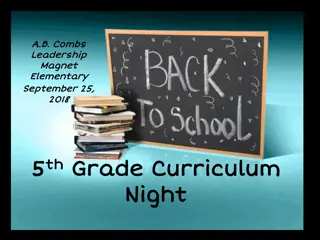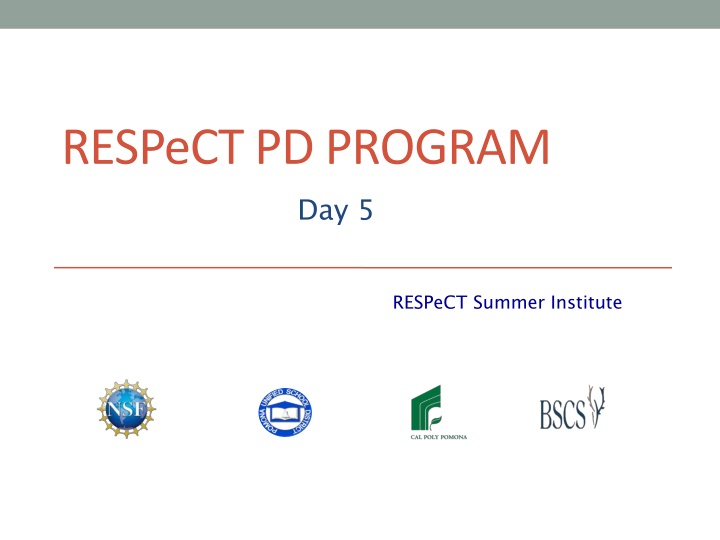
Science Content Storyline Lens and Energy Transfer Strategies
Explore the Science Content Storyline Lens (SCSL), learning goals coherence, energy concepts, and more in this insightful program. Delve into norms for productive group work and enhancing student learning through analysis.
Download Presentation

Please find below an Image/Link to download the presentation.
The content on the website is provided AS IS for your information and personal use only. It may not be sold, licensed, or shared on other websites without obtaining consent from the author. If you encounter any issues during the download, it is possible that the publisher has removed the file from their server.
You are allowed to download the files provided on this website for personal or commercial use, subject to the condition that they are used lawfully. All files are the property of their respective owners.
The content on the website is provided AS IS for your information and personal use only. It may not be sold, licensed, or shared on other websites without obtaining consent from the author.
E N D
Presentation Transcript
RESPeCTPD PROGRAM Day 5 RESPeCT Summer Institute
Agenda for Day 5 Day-4 reflections Focus questions Review strategy 6: use and apply What Is the Science Content Storyline Lens? Introducing SCSL strategy A Lesson analysis: SCSL strategy A Lunch Content deepening: energy transfer Summary, homework, and reflections
Trends in Reflections Lesson Analysis Science Content Learning
Norms for Working Together: The Basics Purpose: Build trust and develop a productive study group for all participants. The Basics Arrive prepared and on time; stay for the duration; return from breaks on time. Remain attentive, thoughtful, and respectful; engage and be present. Eliminate interruptions (turn off cell phones, email, and other electronic devices; avoid sidebar conversations). Make room for everyone to participate (monitor your floor time).
Norms for Working Together: The Heart Purpose: Build trust and develop a productive study group for all participants. The Heart of RESPeCT Lesson Analysis and Content Deepening Keep the goal in mind: analysis of teaching to improve student learning. Share your ideas, uncertainties, confusion, disagreements, questions, and good humor. All points of view are welcome. Expect and ask questions to deepen everyone s learning; be constructively challenging. Listen carefully; seek to understand other participants points of view.
Focus for the Week Content area 2: energy transfer (ET) Science Content Storyline Lens Strategies A, B, C, D, F, G, H, and I Video-based lesson analysis (Energy Transfer lessons) Energy Transfer lesson plans review (last day) Academic-year schedule (last day) Video recording Study-group sessions
Todays Focus Questions 1. What is the Science Content Storyline Lens (SCSL)? 2. Why is one main learning goal essential for science content storyline coherence? 3. How do we know whether something has energy? 4. What causes a moving object to have more or less motion energy?
Check Your Understanding of Strategy 6 Jot down your responses to this multiple-choice quiz: 1. Use-and-apply tasks are used [before/during/after] new science ideas are introduced. 2. For difficult content ideas, students might need to practice applying new ideas in [one/two/many] different contexts. 3. [True/false]: Use-and-apply questions or activities are used primarily for student assessment at the end of a unit. 4. It s appropriate for teachers to ask [elicit/probe/challenge] questions during a use-and-apply activity. 5. Teachers should [never/judiciously/always] tell students about science ideas they are missing or stating inaccurately.
Use and Apply Your Content Deepening Knowledge How do you think the Sierra Nevada Mountains were formed? Use your knowledge of the mountain-building process? Do you think the Sierra Nevada Mountains today are being built up and getting higher or worn down and getting lower? Photo courtesy of Pxhere.com
Planning Science Lessons: Quick Write What is generally your thinking process when you plan your science lessons? Be prepared to share your ideas with the group.
Lesson Analysis: Focus Question 1 What is the Science Content Storyline Lens (SCSL)? What is a science content storyline, and why is it important? What is challenging about developing a science content storyline?
The TIMSS Video Study Findings and the Science Content Storyline Lens Source: TIMSS study
Lesson Analysis: Focus Question 2 Why is one main learning goal essential for science content storyline coherence?
Purpose and Key Features of Strategy A Review your SCSL Z-fold summary charts and share with a partner the purpose and key features of strategy A: Identify one main learning goal. Remember to cite passages from the STeLLA strategies booklet. Be prepared to share with the group.
A Main Learning Goal Is A big science idea that you want students to learn A big idea that shows the relationship among science ideas The focus of the lesson (or series of lessons) Stated in a complete sentence (for planning purposes) Stated by the teacher, a student, a text, or a multimedia resource A support for teacher planning
A Main Learning Goal Is NOT A topic or phrase An activity A question A performance task or objective A supporting detail, definition, or fact A student misconception or idea that isn t scientifically accurate
Definitions: One Main Learning Goal and Science Ideas 1. Read these sections in the STeLLA strategies booklet: (1) STeLLA Strategy A: Identify One Main Learning Goal, and (2) Student Ideas and Science Ideas Defined. 2. Based on these readings, what are the differences between a main learning goal and a science idea?
Practice Identifying Student Ideas and Science Ideas Identify any student ideas and science ideas on this list: 1. Kinetic energy 2. Power is how fast or slow the energy flows into or out of a system. 3. How does energy transform? 4. Energy isn t created or destroyed; it s just transformed. 5. Stationary objects have potential energy.
Practice Identifying Student Ideas and Science Ideas in a Class Discussion Identify one student idea and one science idea in this class discussion: T: What do you mean by It got some energy ? S: Well, the marble must have had the energy inside it or something, so it got it and used it to move. T: Could the energy have come from somewhere else? Could the marble have gotten the energy from somewhere else? S: Maybe. T: Can you describe the energy of the marble rolling down the ramp and colliding with the other marble at the bottom? S: The marble sped up as it rolled down the ramp, so it was getting more and more energy. When it collided with the other marble, it slowed down, and the other marble sped up. Oh! Maybe the energy moved from the first marble to the second marble.
Science Ideas That Support the Main Learning Goal Main learning goal: When an object moves faster, it has more energy. Supporting ideas: Objects move faster down a steeper ramp. An object that moves faster has more motion energy than when it moves slower. A marble will roll faster down a ramp with a larger angle of inclination.
Practice Identifying Main Learning Goals 1. Small groups or pairs: Use the criteria in Analysis Guide A (handout 5.1 in binder) to analyze a list of candidate main learning goals related to energy transfer (handout 5.2: Practice Identifying One Main Learning Goal). 2. Select candidates from the list that you think are good main learning goals for the focus of the lesson and record the reasons for your choices on handout 5.2. 3. Whole group: Discuss and justify your selections.
Lesson Analysis: Strategy A Next, we ll watch a sequence of three video clips from a single lesson about energy and energy transfer. Analysis question for all three clips: Does this lesson have one main learning goal? Follow-up questions: If yes, what is it? If no, what do you think is happening in the lesson?
Lesson Analysis: Review Lesson Context, Video Clip 1 1. Read the lesson context on the video transcript (handout 5.3 in PD program binder). 2. As you watch the clip, keep the analysis question in mind: Does this lesson have one main learning goal? If yes, what is it? If no, what do you think is happening in the lesson? Link to video clip 1: 5.1_stella_et_bernstein L2 c1 Link to video clip 1: 5.1_stella_et_bernstein L2 c1
Lesson Analysis: Analyze the Video, Video Clip 1 1. Study the video transcript and write down any science ideas the students and/or the teacher put on the table. 2. Pair up and compare the science ideas you identified. Then discuss the analysis question: Does this lesson have one main learning goal? If yes, what is it? If no, what do you think is happening in the lesson? 3. As a group, discuss what the main learning goal might be. Support your answers using your analysis of the science ideas you identified.
Lesson Analysis: Review Lesson Context, Video Clip 2 1. Read the lesson context on the video transcript (handout 5.4 in PD binder). 2. As you watch the clip, keep the analysis question in mind: Does this lesson have one main learning goal? If yes, what is it? If no, what do you think is happening in the lesson? Link to video clip 2: 5.2_stella_et_bernstein_L2_c2 Link to video clip 2: 5.2_stella_et_bernstein_L2_c2
Lesson Analysis: Analyze the Video, Video Clip 2 1. Study the video transcript and write down any student ideas and science ideas you identify. 2. Pair up and compare the student ideas and science ideas you identified. Then discuss this question: Are these ideas consistent with the possible main learning goal you identified for video clip 1? 3. As a group, discuss the possible main learning goal for this lesson. Make sure to support your answers using your analysis of the science ideas you identified.
Lesson Analysis: Review Lesson Context, Video Clip 3 1. Read the lesson context on the video transcript (handout 5.5 in PD binder). 2. As you watch the clip, keep the analysis question in mind: Does this lesson have one main learning goal? If yes, what is it? If no, what do you think is happening in the lesson? Link to video clip 3: 5.3_stella_et_bernstein_L2_c3 Link to video clip 3: 5.3_stella_et_bernstein_L2_c3
Lesson Analysis: Analyze the Video, Video Clip 3 1. Study the video transcript and write down any student ideas and science ideas you identify. 2. Pair up and compare the student ideas and science ideas you identified. Then discuss this question: Are these ideas consistent with the possible main learning goal you identified for clips 1 and 2? 3. As a group, discuss the possible main learning goal for this lesson. Make sure to support your answers using your analysis of the science ideas you identified.
One Main Learning Goal? 1. Based on your analysis of these three video clips, does this lesson have one main learning goal? What do you think it is? 2. Use the criteria questions in Analysis Guide A to analyze the main learning goal identified in these clips. 3. Are there any supporting science ideas that don t closely match the main learning goal?
Examine Energy Transfer: Lessons 2a/b 1. Review the main learning goal for lesson 2 in the Energy Transfer scope and sequence. 2. Read the main science ideas that support the main learning goal (see the Science Content Storyline column for lessons 2a/b in the scope and sequence). 3. How do the main learning goal and supporting science ideas for lesson 2 align with what you identified in the video clips?
ENERGY TRANSFER SCIENCE CONTENT DEEPENING Grade 4
Your Learning and Teaching Experiences Share your background learning about energy in school. Share your experience teaching students about energy.
Review: Science Content Storyline 1. A coherent science content storyline consists of carefully chosen and sequenced science ideas that build on one another to tell a story about one big science idea or crosscutting concept. 2. The activities in the lesson must engage students in making sense of the storyline, and the science ideas must be linked explicitly to the activities.
Teaching about Energy What do you teach your students about energy? In your notebooks, write a typical science content storyline you d use when teaching a lesson on energy or energy transfer. Share your storylines with an elbow partner.
Ideas about Energy What is energy, and how can we detect it?
Familiar Forms of Energy All photographs courtesy of Pixabay.com
Forms of Energy Read each description on the handout and write down at least one example of each form of energy. See if you can match any of the definitions on the handout with the pictures on the previous slide.
How Energy Is Transferred Energy is transferred as a result of work and as heat. How can you tell? Definitions Work is a push-or-pull force that acts across any amount of distance on an object Heat is a form of energy that flows automatically from a hot thing to a cold thing. The receiving object gains internal energy, causing it to warm up or change phase (e.g., liquid to gas).
How Energy Is Transferred through Work Work Accomplished when moving an object against a frictional force Performed by gravity when something falls to the ground Accomplished when lifting an object against the force of gravity Required to squeeze an object against elastic forces Causes an object to accelerate to a new speed Required for charging a battery to use later
How Energy Is Transferred as Heat Heat Radiated by the brightness of a fire Reaches Earth from the Sun Rises with the hot air from a heating duct Causes warm air to rise Felt when holding a sleeping baby Melts ice in your hand Transfers from a hot iron to your hand when you burn it Causes a kettle of water to change temperature
Energy Sources Where does the energy come from for the following objects to achieve something useful? Coasting bicycle Flowing water Speeding car Burning log Shining lightbulb Ringing cell phone Bouncing soccer ball Crawling baby
Unit Central Question How does the energy of an object move and change?
Content Deepening: Focus Question 1 How do we know whether something has energy?
Investigation 1: Energy Detectives Pairs: Examine the objects in the bag. Then talk about whether these objects have energy. What do you observe? Which sense(s) are you using to detect energy in each object? What evidence can you find that shows the object has energy? Record your observations and evidence for each object on a data table in your notebooks. Include anything you did to each object to detect energy.
Investigation 1: Energy Detectives What did you find out as energy detectives? What did you observe about each object? Which sense(s) did you use to detect energy in each object? What evidence of energy did you find in each object? Did you need to do anything to the object to detect energy? If so, what? As others share, be ready to agree, disagree, ask questions, or add on.
Reflect: Content Deepening Focus Question 1 How do we know whether something has energy?
Key Science Ideas Energy is all around us and can be detected using our senses. Seeing objects move, hearing a sound, feeling heat, and seeing light are all ways of detecting energy.
Content Deepening: Focus Question 2 What causes a moving object to have more or less motion energy?


